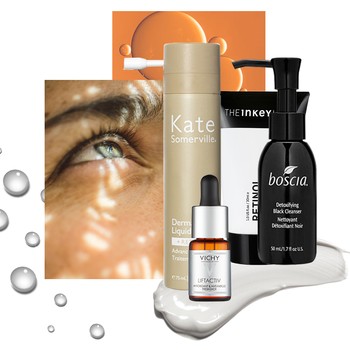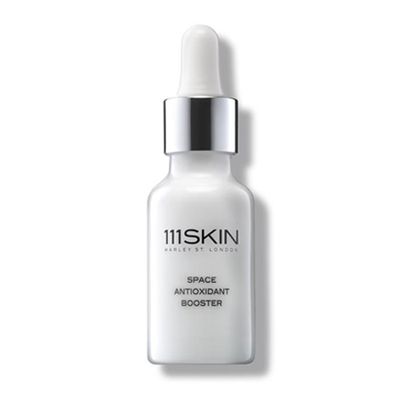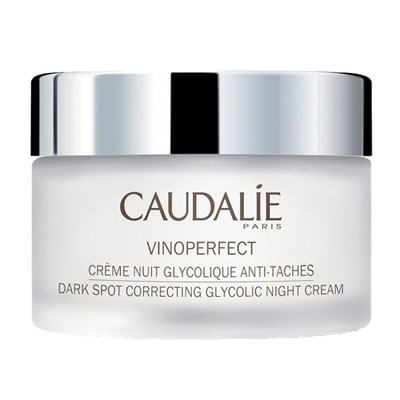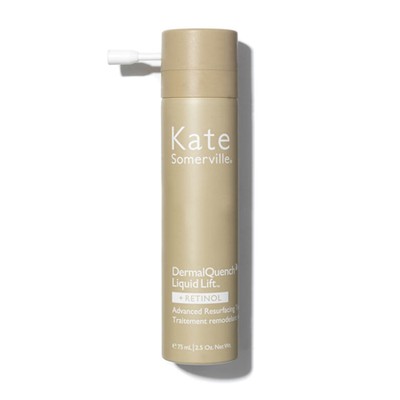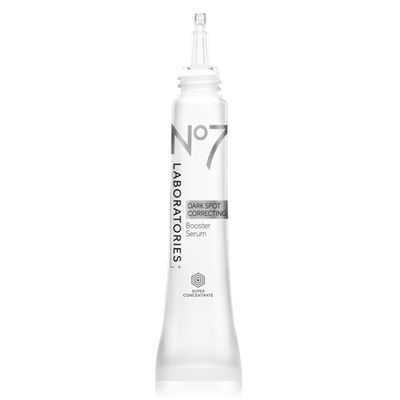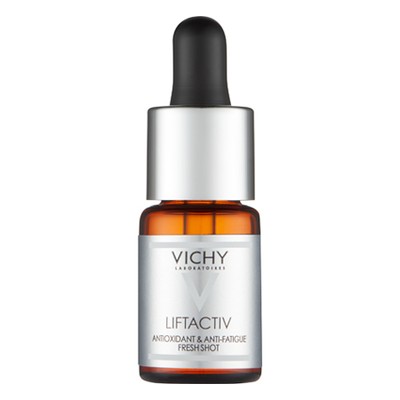A Dermatologist’s Guide To Pigmentation & Age Spots
Dark Spots Don’t Have A Single Cause
Most of us assume UV exposure is the main cause of dark spots. But other inflammatory stressors include acne breakouts, harsh chemicals on the skin and even hormonal fluctuations, such as those in pregnancy or when taking the contraceptive pill. Hormonal related patches of pigment are often referred to as melasma and tend to be more diffused patches of pigmentation compared to age spots. The perimenopause and menopause also contribute. This is because during this time, our oestrogen levels plummet, which is why we often see sagging skin and dehydrated complexions in post-menopausal women. While the exact mechanism isn’t fully understood, we do know that these fluctuations can trigger melanocytes to overproduce melanin in an abnormal way.
They’re Incredibly Common For All Women
You’re not alone with this skin condition. In fact, age spots are very common and appear as an area of discolouration, also known as hyperpigmentation, on the skin. Often, they tend to appear after the age of 40 years old on sun exposed areas, such as the face, hands and décolletage but can occur in younger skin too, particularly if there is a history of UV damage.
They Have Nothing To Do With Your Liver
Despite often being referred to as liver spots, be safe in the knowledge that they have nothing to do with the health of your liver at all. These brown patches are caused by an increased production of melanin, the natural pigment that gives our skin its colour and is produced by cells called melanocytes in our deeper skin layers. These cells release melanin (brown pigment) whenever the skin is exposed to inflammation or injury. The pigment produced acts as a defensive shield, a bit like an umbrella stops the rain from soaking us, the melanin acts as an umbrella or shield to block damaging stressors, such as UV rays, from entering the deeper skin layers, thereby preventing DNA damage.
Contrary To Popular Belief, Fats Aren’t A Trigger
There are so many myths floating around when it comes to our skin, one of the biggest is that unsaturated fats contribute to age spots. There is no reliable data to support this theory and in my clinical experience, I’d say the opposite is true, they actually have multiple skin health benefits. Our epidermal health (the top skin layers) rely on a balanced ratio of fatty acids, ceramides and cholesterol to maintain optimal health. This barrier helps to block harmful UV Rays and pollution from entering the skin and also stops the important stuff, such as water, escaping through a process called transepidermal moisture loss. Studies show dietary and topical application of unsaturated fatty acids can also reduce UV related skin damage and in turn, pigmentation.
Prevention Is Better Than Cure
I recommend wearing a daily SPF product (minimum SPF 30) to help prevent UV damage induced pigmentation – which remains the main cause for hyperpigmentation spots. Remember, we’re exposed to UV rays every single day, all year round and even on those grey and drizzly days, it’s just not worth going unprotected. Make sure you check your product has UVA protection too, not just UVB and seek out ones with 5* rating, that way you know you’re getting the very best. I also recommend using pigment stabilising ingredients in your skin to stabilise your melanocytes (pigment producing cells). This will make them less likely to overproduce melanin, whether the trigger be UV or hormones, or outbreaks. These ingredients will also help to break down unwanted pigmentation, without bleaching the skin. Try both ascorbic acid (vitamin C) and alpha arbutin. Both are derived from the Bearberry plant and are excellent natural ingredients. Look out for them in your serums and use it morning and night. Choose skincare with natural brighteners such as sunflower, rich in B vitamins, Niacin and Pantothenic acid, which all naturally improve the surface of the skin.
There Is No Single Cure-All Solution
Hyperpigmentation is multifactorial. It’s important to understand that there is no single therapy available to cure age spots and pigmentation. The best strategy to tackle them is by following a regime with the above ingredients. You can also try clinical therapies, such as lasers, which will aid in breaking down old pigmentation, but it’s quite a long process. The best treatments often involve a combination of both at-home and in-clinic based procedures. This way, we can achieve adequate reduction and even complete resolution in many patients. The most challenging treatments are those patients with post-inflammatory pigmentation and a darker skin type. There may be some residual pigmentation, but it can definitely be reduced to a level where self-confidence is restored.
The Difference Between Age Spots & Melanoma Is Often Confused
People often get the two mixed up, but as a general rule of thumb, age spots are known for their small, brown appearance. They occur as flat patches of pigmentation and you will usually have several of them, rather than one is isolation. If you do notice an area of new pigmentation that looks unusual, it is worth getting a dermatologist to check your skin, as some types of skin cancer can present as pigmented lesions too.
Vitamin A Is A Great Remedy
My strategy to address pigmentation is focused on three main goals. Firstly, I want to stabilise the pigment production cells, and calm down their production of melanin (brown pigment). Secondly, I want to speed up the breakdown of the existing inflammatory pigmentation. To do both things I use a combination of 15% L-ascorbic acid, Alpha Arbutin 2% and Resveratrol 1% in serum or cream form. A daily dose of Vitamin A (retinol) 0.5-1% in third generation form, works well for most patients. Vitamin A is a fabulous multi-tasker and in a good quality cosmeceutical formulation, works to reduce cell damage, boost repair, regulate oil production, boost collagen formation and reduce pigmentation. It has a melanocyte stabilising and melanin breakdown effect. It needs to be used in a night cream or serum to work best, as it is destabilised by UV rays. For the same reasons, all products rich active strength vitamin A should come in opaque packaging. Thirdly, it goes without saying that protection from melanocyte triggering UV damage is integral to the success of your treatment programme. Look for a combination of mineral and chemical blocking agents such as titanium dioxide and ethyl salicylate to provide adequate broad-spectrum protection.
Natural DIY Treatments Won’t Minimise Them
I am all for natural remedies but unfortunately, when it comes to pigmentation, there is no substitute for using specially formulated skincare and medical grade treatments to tackle the problem. Topical treatment options may include prescription strength retinoids, azelaic acid and chemical peels. Reassurance and time are also essential elements of a successful treatment programme.
Shop Our Favourite Products To Help Pigmentation Below...
Dr Anita Sturnham is a GP and dermatologist and leads the London skincare and wellness clinic, Nuriss.
DISCLAIMER: We endeavour to always credit the correct original source of every image we use. If you think a credit may be incorrect, please contact us at info@sheerluxe.com.
